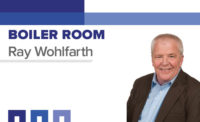An electrician walked into the equipment room to diagnose and repair an electrical problem in the school. It didn't take long for the carbon monoxide inside the boiler room to fell the man. The source of the carbon monoxide leak was a faulty boiler installation. A short while later, the electrician was carried out of the building by the firefighters and taken to the hospital. Luckily, he survived.
The mechanical room's importance and safety are often overlooked, and that could cause problems for the equipment installed in the room and the humans who visit it. The following are some of the common issues inside a mechanical room I have seen.
Is it safe?
Like the incident above, carbon monoxide can be a dangerous adversary, and steps should be taken to monitor the poisonous gas inside equipment rooms. If you regularly work in equipment rooms, a personal CO detector is a great safety tool. It protects the wearer by alerting if high levels of carbon monoxide are present. I also urge all owners to install a carbon monoxide detector in their equipment rooms to protect the people in the building. Some of the newer models also check for combustible gases.
Will it require heat?
When replacing an older boiler with a new one, the temperature inside the updated boiler room may be significantly lower. As a result, the room may require supplemental heat. If this was not included in the bid, you might have a very unhappy customer, especially if the room has combustion air openings that are fixed open. In colder climates, there is a chance of pipes freezing inside the room.
Can the boiler breathe?
Each fuel-burning appliance requires air for proper combustion. Without sufficient combustion air, the boiler could run rich, and this could cause carbon monoxide to be generated in the boiler and flue, creating a hazardous condition. When looking around the mechanical room, verify the combustion air openings are free and clear. If the boiler room uses motorized combustion air louvers, verify they open and that the movement is smooth. Most motorized combustion air dampers have an end switch to prove the dampers are fully open before the boiler starts.
Why are they replacing the boiler?
Boilers are designed to last for 20 years or more. When I see one being replaced before that, I have to wonder why. Sure, you could attribute it to the manufacturer that your competitor sells, but do so at your own risk. Your boiler could be in the same condition as the one you are looking at now, and your reputation could be tarnished.
Ask the owner why they are replacing the boiler, and then you need to look at the system and try to find the real cause. On one project, the owner was looking to replace a 10-year-old water tube boiler. When asked why he was replacing it so soon, he said the tubes were leaking. He showed me one of the old tubes that was replaced. It was destroyed from the outside, which meant the flue gases were condensing in this noncondensing boiler. The boiler operating control was set for 110° F, well below the 140° threshold the manufacturer suggested. My noncondensing boiler would suffer the same fate in a few years. I suggested a condensing boiler for this application and explained that these types of boilers can tolerate lower flue gas temperatures.
Is there an escape route?
When a problem happens inside a boiler room, it happens quickly, and the equipment room in most buildings is the place where the owner stores things that have no business being there. I like to map a mental escape route when working inside the equipment room in the event of a malfunction. If the escape pathway is blocked or restricted, it could cause you to fall or trip on the way out. A steam leak inside the boiler room will fill the room, making breathing difficult and seeing almost impossible.
Door switch?
White, wet smoke was what the fire department said greeted them when they opened the boiler room door. The smoke detector inside the boiler room had tripped, and the system automatically called the fire department. Using their thermal scanning camera, they located the source of the white, wet smoke — a cast iron sectional boiler. Training their hoses on the boiler, they opened the valves and sprayed cold water on the hot boiler, never a good idea. The result was almost every section inside the boiler cracked, leaving the building without heat and the owner a hefty repair cost.
Section CE110 of the ASME CSD1 code says the following: “A manually operated remote shutdown switch or circuit breaker shall be located just outside the boiler room door and marked for easy identification.” Had the above building installed a door switch at the boiler room, the fire department could have shut off the boiler and allowed it to cool naturally. This would have saved the boiler.
Ralf Geithe/iStock/Getty Images Plus via Getty Images.


